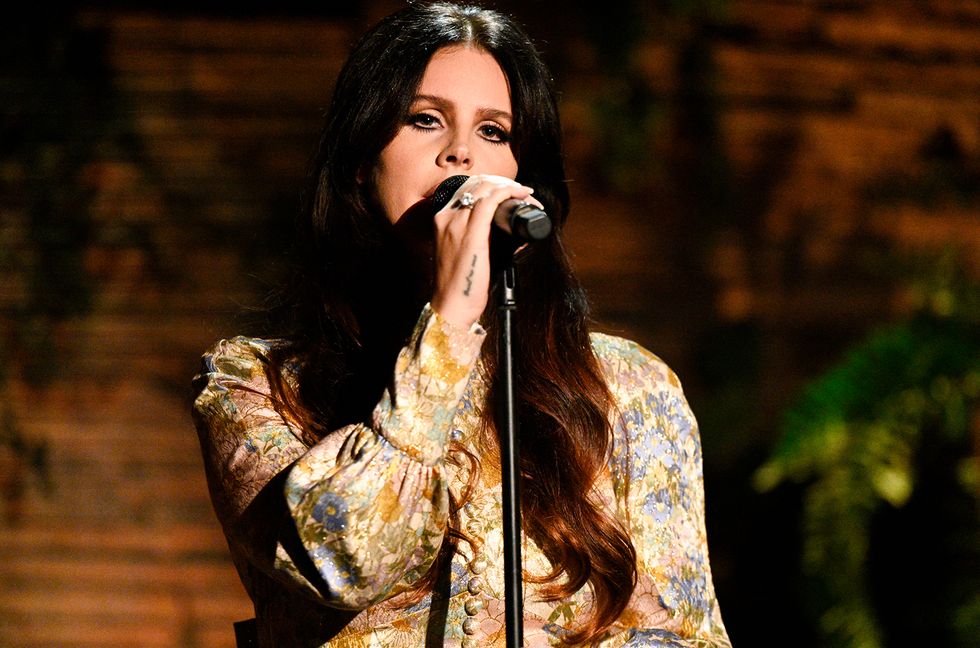Media Beat, Jan. 10, 2022
Stingray Group expands in the US, and signs up Dollarama in Canada

By David Farrell
Stingray Group expands in the US, and signs up Dollarama in Canada
Stingray Group Inc. has acquired InStore Audio Network, the largest in-store audio advertising network in the US, reaching 100 million shoppers each week in over 16,000 grocery outlets and pharmacies. The acquisition price quoted is C$59M subject to a specific earn out mechanism set forth in the purchase agreement.
Separately, Stingray has added retailer Dollarama’s 1397 Canadian stores to its Retail Media Network division. Under the agreement, Stingray will produce and dynamically insert digital audio advertisements within Dollarama stores connected to the retail audio network powered by Stingray’s proprietary streaming media technology. The Stingray Retail Media Network will enable advertisers to reach and connect with Dollarama principal shoppers at point-of-sale, the company says in a press release.
Montreal-based Stingray employs 1,000+ people worldwide and offers a range of products, including direct-to-consumer and B2B services, audio television channels, over 100 radio stations, SVOD content, 4K UHD television channels, FAST channels, karaoke products, digital signage, in-store music, and music apps, which have been downloaded over 160 million times. Stingray reaches 400 million subscribers (or users) in 160 countries.
‘Crazy good’: Rural Canadians are raving over Elon Musk’s Starlink satellite-based internet service. Should Canada’s big telcos be worried?
So far, Canada’s market-dominating triad of internet providers — Bell, Rogers and Telus — have said little publicly about Starlink, which, according to its website, “enables video calls, online gaming, streaming and other high-data-rate activities that historically have not been possible with satellite internet.”
But Gerry Wall, an Ottawa-based telecommunications economics consultant who tracks Canadian internet costs for Innovation, Science and Economic Development Canada, believes Starlink has become a threat to the country’s largest internet providers because of the speed and ease of access to its internet connections. – Paul Webster, Toronto Star
How Rumble, a Toronto-based YouTube alternative, became a refuge for the MAGA crowd (with a US$2B valuation)
People say a lot of things on Rumble – about free speech, the radical left, making America great again and so on. In the past year and a half, Rumble’s growth has exploded as right-leaning content creators and politicians have flocked to the site. Two years ago, Rumble was lucky to crack a million average monthly users. In the third quarter of last year, it hit 36 million. You can find everyone from journalist Glenn Greenwald to Republicans like Devin Nunes to conservative commentators like Ben Shapiro posting there. Mr. Trump, expunged by Facebook and Twitter last year, has a Rumble account featuring videos of his rallies.
The company is run not by an American conservative firebrand but by Chris Pavlovski, a 38-year-old entrepreneur and business-school dropout in Toronto. – Joe Castaldo, The Globe and Mail
AM-FM radio still dominates but streaming services collectively close the gap
How Blackstone plans to create an entertainment empire
Private equity firms have long been unable to stomach hefty investments in new entertainment companies. But Blackstone’s big bet on Kevin Mayer and Tom Staggs’ Candle Media is testing whether the money gushing into streaming can change all of that. – Jessica Toonkel, The Information
The Athletic sale shows the age of consolidation is upon us
As a nearly two-year-old sports media start-up, The Athletic sold itself as a vulture hovering over the carcasses of local newspapers left to die in the digital age. The website’s cofounder Alex Mather went so far as to claim that The Athletic’s goal was to hasten the extinction of local news by poaching the most talented beat reporters from local sports sections—one of the few areas in which these antiquated publications continue to thrive. “We will wait every local paper out and let them continuously bleed until we are the last ones standing,” Mather said in 2017.
In hindsight, it seems Mather was broadcasting his plan to the local paper—albeit local in name only—that would one day buy him up. On Thursday, TheNew York Times announced it would be purchasing The Athletic, which has succeeded in building a robust roster of writers to cover nearly every notable sports town in America, for about $550 million. Despite its impressive masthead, The Athletic has, at times, been a money-losing venture, operating more than $20 million in the red in 2019. However, it boasts a paid-subscriber base of 1.2 million—a number that gets the 8 million–strong Times closer to its 2025 goal of 10 million. – Caleb Ecarma, Vanity Fair
Money in the metaverse
In recent months, the metaverse has been described as a kind of online place, combining virtual reality, augmented reality, the Internet, entertainment experiences, gaming, and remote work. The key idea is that, no matter what you’re doing in the metaverse, or where you are, your identities and assets will be multi-platform and transportable: you’ll be the same “you” at work and at leisure. As the concept of the metaverse has snaked into the discourse, predictions about it have seemed mainly to reflect the desires of the corporations that are setting the terms of the conversation. (The term “metaverse” itself, which has its origins in dystopian science fiction, has been aggressively promoted by companies with worlds to sell.) Reading about the metaverse, I’ve often had the uneasy feeling that I am taking something far too seriously—giving credence to the wrong things, internalizing the wrong logic—simply because a small number of world-historically wealthy people have told me to. – Anna Wiener, The New Yorker
Gravitas Plus: The metaverse explained
2022 is expected to be the year of Metaverse. A virtual universe where reality meets imagination. How safe is it going to be? Will it make our lives better or will it manipulate our perception of reality? Palki Sharma decodes.
Azoff Group strikes deal with radio stations to end legal battle over performance rights
The settlement, if approved, will provide up to 10,000 radio stations long-term licensing agreements with rate certainty for performers. – Winston Cho, The Hollywood Reporter
China bans most exclusive copyright deals for digital music platforms
The order comes amid a widening crackdown by Chinese regulators on the country's technology sector, which has focused on issues such as monopolistic behaviour, unfair competition and consumer rights.
Last year, Tencent Holdings announced it had ended all exclusive music copyright agreements after it was ordered by China's market regulator to do so. The regulator had said the firm held more than 80 percent of exclusive music library resources which increased its leverage over upstream copyright parties and allowed it to restrict new entrants. – Channel News Asia
'Don't Look Up' smashes Netflix viewing record; director Adam McKay 'flabbergasted'
Don’t Look Up has broken Netflix streaming records, Variety reports. The disaster movie logged 152.29 million hours streamed between Dec. 27 and Jan. 2, making it the top globally viewed English-language film.
Idiots on Wheels
Of all the industries that never learn anything, my vote for the dumbest goes to the auto industry. It doesn't matter how many times they try the same stupid strategy and fail; they never learn.
The strategy in question, of course, is the "let's target young people" strategy. It never works, but it is the knee-jerk strategy for every new product from every auto marketer in captivity.
The latest example is Lexus. They have a new SUV, the NX, which they are targeting to young "creative visionaries" (someone shoot me) with all kinds of hip media horseshit. Only problem is, the average luxury SUV buyer is 53 years old.
The auto industry's magical thinking goes back a long way. Of course, there was the infamous "Not Your Father's Oldsmobile" campaign that helped kill an entire brand.
More recently, in 2015, Cadillac gave us the hilarious "Dare Greatly" campaign which “tapped into the Millennial mindset." Yeah, right. They even moved their entire headquarters to NYC's SoHo area to prove how young and hip they were. The result? Cadillac has the oldest buyers of any car brand on the planet. Oh, and they're back in Detroit.
In 2016, Toyota killed Scion, its entry into the "youth car" market. The "youth car" idea was all the rage in the early 2010s. The idea was to target the ever-popular (and mostly non-existent) 18–34-year-old car buyer. According to The Wall Street Journal, 88% of these "youth cars" were bought by people over 35. Scionara.
For just plain laughs, it's hard to beat Chevy's attempt to be young. In 2012 they hired some clown from MTV who "transformed part of the G.M. lobby into a loftlike space reminiscent of a coffee shop in Austin or Seattle, with graffiti on the walls and skateboards and throw pillows scattered around." Average age of a Chevy buyer? 46.
Back to Lexus and its new NX. According to MediaPost, "Gen Y and Gen Z luxury buyers tend to be more diverse, more affluent..." said Lexus' VP of Marketing.
Just curious about who these "affluent Gen Z" luxury car buyers are. The average Gen Z is now 16 years old...You truly cannot make this stupid shit up.
The auto industry, steeped in research horseshit about "creative visionaries" and decades of other socio-generational idiocy can't get it through their thick skulls that our population is ageing at warp speed; that the average car buyer in America is 53; that since 2000 the share of new cars bought by people over55 has increasedby 15%. These people are really, truly, genuinely clueless.
I'll leave the last word to P.J. O'Rourke, "Whenever anything happens anywhere, somebody over 50 signs the bill for it.” – Bob Hoffman, The Ad Contrarian

















